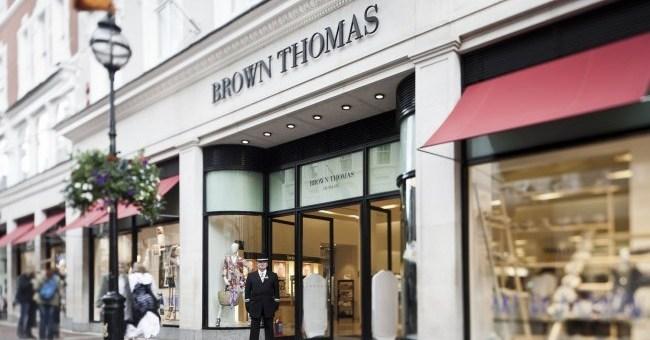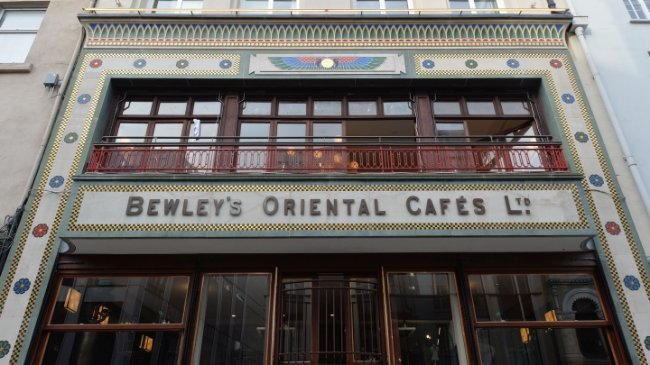“Grafton Street’s a wonderland, there’s magic in the air
There’s diamonds in the lady’s eyes and gold-dust in her hair
And if you don’t believe me, come and meet me there
In Dublin on a sunny Summers morning..”
So goes part of the famous song ‘The Dublin Saunter’, which was written by Leo Maguire made famous by Noel Purcell which references the street we discuss in Episode 2 of this blog series: Grafton Street.
Grafton Street, the name
A good starting point would be to answer a question many a child has often asked their parents as they merrily traipsed towards the Gaiety Theatre and the thrills and spills of the Christmas panto; ‘How did the street get its name?’
The street is named after one Henry Fitzroy who was the second son born out of wedlock for the English King Charles II, who earned the title “1st Earl of Grafton”. After some initial hullabaloo his bloodline was officially recognised, with reports at the time claiming he became “the most popular and ablest of the sons of the king”. Around this time the area that Grafton Street now encompasses was mere marshland, where activities such as the grazing of animals and the odd witch burning – no less - took place.
Commercialisation of Grafton Street
Grafton Street was originally a thoroughfare of houses for the rich, built and then sold or rented by the wealthy Dawson family (whom the neighbouring street is now named after). The most famous of the family was Joshua Dawson who became a Senior Civil Servant, prolific landowner and politician. Following the opening of the O’Connell Bridge in 1794, the residential dwellings gradually changed use and commercial enterprises began popping up. This saw the introduction of the main commercial street in Dublin, Grafton street.
The fact the Irish Parliament on Foster Place and the head of the births administration in Ireland, Dublin Castle were within easy walking distance added to the appeal of the street.
Famous Department Stores
We will now skip 90 years to when Switzers first opened its doors in 1838; it is fondly remembered by Dubliners of a certain age for their fabulous Christmas window display which would excite and delight both parents and children in equal measure.
Competition later arrived with the opening of Brown Thomas a decade later in 1848. BTs, as it is now known, all started off in number 16 Grafton Street by one Hugh Brown. A year later with a new partner James Thomas and his injection of finance into the firm, they bought and extended the shop into number 17. By the time they sold the store to the Selfridge family – owners of the famous London emporium – in 1919, they had grown into number 15 as well.
In 1983 the company was bought over by the Canadian billionaire Weston family, who in 1991 bought over rival Switzers and moved across the road into the building it’s now disappeared competitor occupied for over 150 years.

Other Iconic Residents Of Grafton Street
Department Stores are not the only famous residents in Grafton for when love is in the air we have Weir & Sons. Weirs opened its doors in 1869 at 96-99 Grafton Street, and is still offering high end watches, jewellery and top notch advice to this very day.
But if one was to answer the question as to what was the most notable or highly regarded premises on Grafton Street, it would have to be Bewleys Café. It first opened its doors at numbers 97-98 in 1927 and the Quaker Bewley family sought the best of produce to make the foods and desserts that were to gain a legendary status over time. The building would later become adorned with wonderful stained windows designed by the world renowned artist Harry Clarke. For many people, a trip to Dublin simply would not be complete without a visit to one of Bewley’s three café’s. Sadly, the original Bewley’s café on Grafton Street closed its doors in May this year following the impact of Covid-19 to business.
Sandwich Bars
Bewleys introduced what was called the first “Sandwich Café” to Grafton Street, because it just served sandwiches and rolls to eat in or take-away. Dublin now has a zillion places offering sandwiches, wraps and other lunchtime delicacies to go. Back in 1927 take away was a rather new concept, before then people consumed food sitting at tables in a café with a pot of tea or coffee in situ as they read the Irish Press or chatted to a friend.

Street Artists
Grafton street offers so much more than just its fab stores and is renowned for the street artists that traverse it’s wide boulevard with perhaps the most well-known of them all being Glasgow born Thom McGinnity who was more commonly known as “the Diceman”. Whether he dressed up as Mona Lisa, a clown or as a teapot, he was always entertaining and never afraid to be provocative as seen in his displays supporting Gay Rights which attracted much attention in the capital. When he passed away in 1995, the city mourned one of its most famous sons, with many remarking that Grafton Street would never be the same again.
And Grafton has not stopped developing and reinventing itself and has now embraced the “Grafton Quarter concept”, which according to business advocacy Dublin Town (who came up with the idea) encompasses Grafton, Nassau and Dawson Streets as well as the area around the Stephens Green Centre. And it I still just a lovely street to walk along on a sunny morning.
Some interesting facts about Grafton Street:
Did you know that traffic used to go up this grand thoroughfare until as recently as 1981, when vehicles were banned and the street completely pedestrianised. What started off as a four week trial has remained in place to this day, spawning the street artist culture that this wide boulevard is renowned for, be it someone singing the songs of Luke Kelly or a man with silver body paint dressing up as James Joyce. The duration and danger of a ‘trial’ is something to beware of!
Grafton Street is the 57th most expensive street in the world to rent on according to a report published by estate agency Cushman & Wakefield in 2017.
Grafton Street is hugely popular with over 8,000 people a day walking through it.
If you’re interested in learning more about a particular Irish street let us know. Otherwise, stay tuned for Episode 3 of our Memory Lane series.